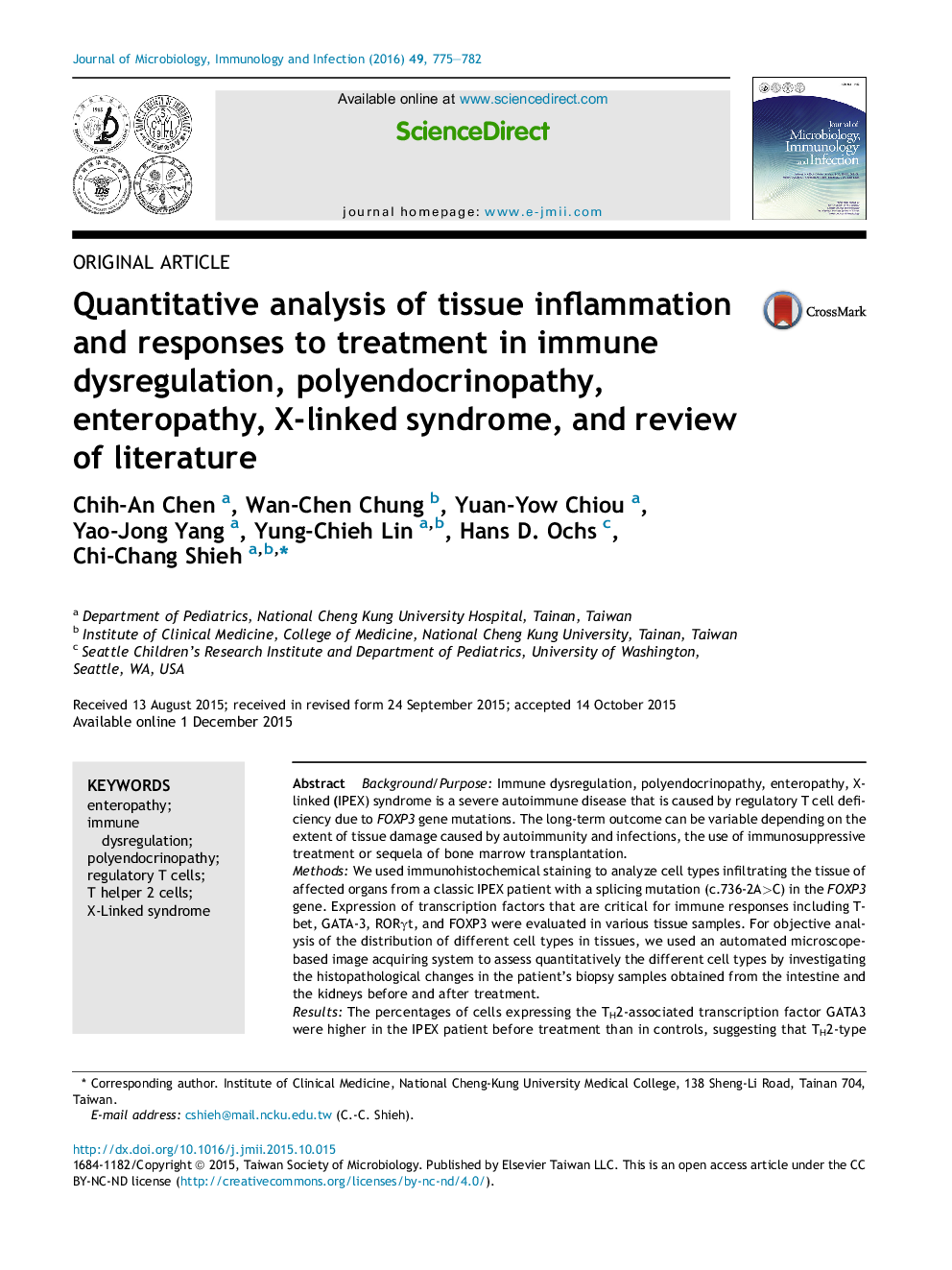| کد مقاله | کد نشریه | سال انتشار | مقاله انگلیسی | نسخه تمام متن |
|---|---|---|---|---|
| 5669083 | 1407937 | 2016 | 8 صفحه PDF | دانلود رایگان |

Background/PurposeImmune dysregulation, polyendocrinopathy, enteropathy, X-linked (IPEX) syndrome is a severe autoimmune disease that is caused by regulatory T cell deficiency due to FOXP3 gene mutations. The long-term outcome can be variable depending on the extent of tissue damage caused by autoimmunity and infections, the use of immunosuppressive treatment or sequela of bone marrow transplantation.MethodsWe used immunohistochemical staining to analyze cell types infiltrating the tissue of affected organs from a classic IPEX patient with a splicing mutation (c.736-2A>C) in the FOXP3 gene. Expression of transcription factors that are critical for immune responses including T-bet, GATA-3, RORγt, and FOXP3 were evaluated in various tissue samples. For objective analysis of the distribution of different cell types in tissues, we used an automated microscope-based image acquiring system to assess quantitatively the different cell types by investigating the histopathological changes in the patient's biopsy samples obtained from the intestine and the kidneys before and after treatment.ResultsThe percentages of cells expressing the TH2-associated transcription factor GATA3 were higher in the IPEX patient before treatment than in controls, suggesting that TH2-type cells contribute to the tissue inflammation of the gut and kidneys in IPEX syndrome. Immunosuppressive treatment effectively decreased the number of effector cells in the kidneys and intestine of the IPEX patient.ConclusionThis study provides quantitative evidence that the inflamed intestinal and renal tissues of the IPEX patient contain TH2-type immune effector cells, which decreased in number after immunosuppressive treatment was initiated and the clinical symptoms had improved.
Journal: Journal of Microbiology, Immunology and Infection - Volume 49, Issue 5, October 2016, Pages 775-782